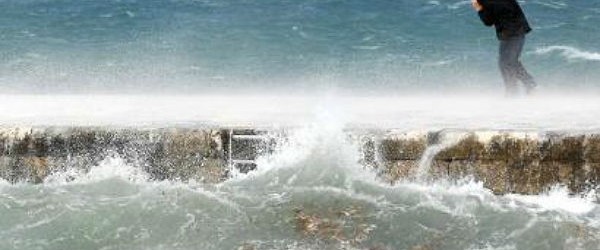Cyclone Ladislav raised Adriatic sea levels, submerged streets along Croatian coastline cities
Source: The Watchers, By Chillymanjaro, 10/2/12

Gale-force south Cyclone Ladislav developed over northern Italy and northern Adriatic sea, causing floods along Adriatic sea coastlines on November 1, 2012. Combination of full moon, low air pressure along with strong winds blowing from the sea toward the coast, increased Adriatic sea levels and submerged streets of almost every city along coastline.
Severe weather also generated torrential rains. In Istria, more than 100 liters per square meter was recorded.
City of Split measured gusts up to 112 km/h, causing significant material damage along coastline. Even stronger winds were measured on the islands of Lastovo, Palagruza, Mljet and Vis, with gusts speed up to 133 km/h. In Barban, Istria, funnel devastated surrounding area.
It is more common in November when torrential rains caused rivers to overflow and bring high amounts of water into the sea. Rare mix caused sea level to increased for about one meter in Croatia. Bakar measured highest sea levels in history. Almost every coastline city on Adriatic sea was flooded by rising sea level. Last time that similar event struck Croatian Adriatic coastline happened in 2008.

Left image shows satellite view of Cyclone Ladislav captured by MODIS/Terra satellite on October 31 and the right image was captured by MODIS/Aqua satellite on November 1, 2012 (Credit: LANCE/MODIS)
Aqua alta
This phenomenon is also known as “aqua alta”- exceptional tide peaks that occur periodically in the northern Adriatic Sea. The phenomenon occurs mainly between autumn and spring, when the astronomical tides are reinforced by the prevailing seasonal winds which hamper the usual reflux. The main winds involved are the scirocco or jugo, which blows northbound along the Adriatic Sea, and the bora or bura
Read more :


Comments